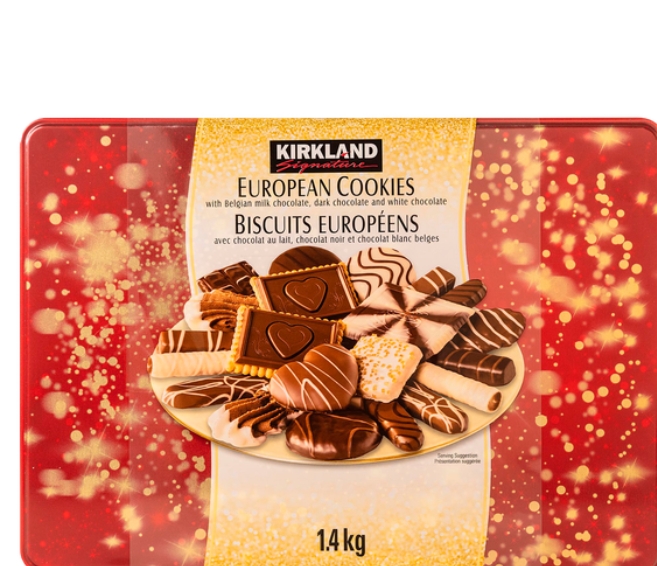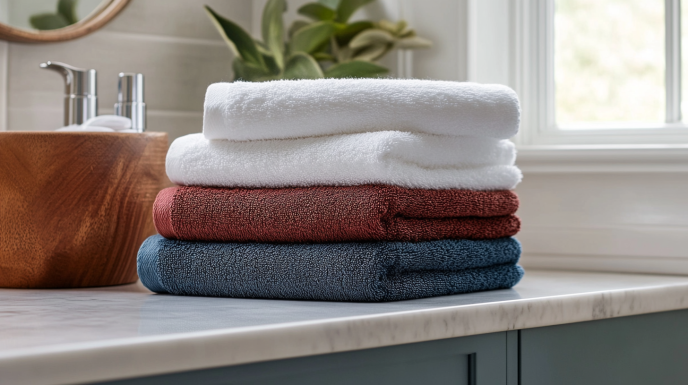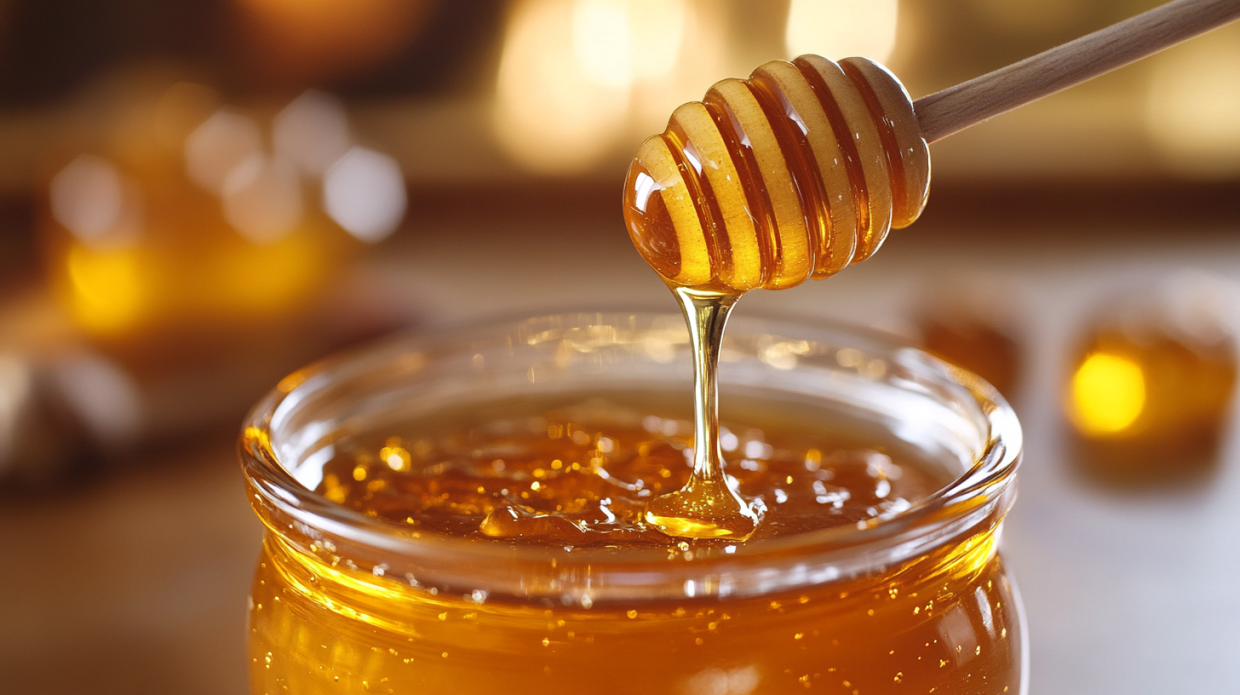
Kirkland Signature European Cookies
1.4 kg
- European cookies
- Christmas box
- 1.4 kg
Uncovering Costco’s Hidden Gem for Cookie Connoisseurs
The gentle rustle of the signature metallic tin, the unmistakable aroma of buttery sweetness, and the anticipation of that first perfect bite – there’s something almost magical about Kirkland European Cookies. If you’ve ever wandered through the endless aisles of Costco and found yourself drawn to this elegant tin of assorted delights, you’re certainly not alone. These cookies have developed something of a cult following among Costco shoppers, and for good reason. But what exactly makes these imported treats so special? Are they worth the investment? And most importantly, which cookie in the assortment reigns supreme? (We all have our favorites, don’t we?)
As a devoted cookie enthusiast who has consumed more than my fair share of these European delights, I’m here to take you on a comprehensive journey through everything you could possibly want to know about Kirkland Signature European Cookies – from their origins and ingredients to their versatility as a pantry staple or gift option. So grab a cup of your favorite warm beverage, perhaps even a cookie if you have one handy, and let’s dive into the sweet world of these beloved treats.
What Exactly Are Kirkland European Cookies?
Kirkland European Cookies are a premium assortment of cookies manufactured in Europe exclusively for Costco’s Kirkland Signature brand. They come beautifully presented in a decorative tin container that instantly gives them an air of sophistication. But don’t let the elegant packaging fool you – these aren’t just pretty cookies; they’re a carefully curated collection of European-style biscuits that showcase a variety of textures, flavors, and chocolate coatings.
What sets these cookies apart from your average supermarket varieties is their authentic European craftsmanship. These aren’t your typical mass-produced cookies with that familiar homogeneous taste. Instead, each type in the assortment has its own distinct character – some are delicately crisp, others satisfyingly dense; some feature intricate designs while others charm with their rustic simplicity.
The collection typically includes butter cookies dipped in various chocolates, wafer cookies with creamy fillings, shortbread varieties, and those distinctive cookies with the tiny sugar crystals that somehow make everything better. The magic of Kirkland European Cookies lies in their perfect balance between sophistication and comfort – they’re fancy enough for special occasions yet accessible enough for everyday indulgence.
The Price Point: Are They Worth It?
One of the most frequently asked questions about these cookies concerns their price tag. At Costco, a 49.4-ounce (1.4 kg) tin of Kirkland European Cookies typically retails between $11.99 and $13.99, depending on your location and any seasonal promotions. This works out to approximately 24-28 cents per ounce, which positions them as more affordable than many comparable premium cookie brands while maintaining impressive quality.
When you consider that similar European cookie assortments from specialty brands often cost upwards of $20 for a smaller quantity, the Kirkland version represents a significant value. This price-to-quality ratio is a prime example of what makes Costco’s Kirkland Signature line so popular among discerning shoppers – you’re getting near-gourmet quality without the gourmet price tag.
But are they worth it? If you’re someone who appreciates the subtle differences between a mass-produced cookie and one made with higher quality ingredients and traditional European methods, then absolutely. The variety in the tin also means you’re essentially getting multiple types of cookies for one price, making it economical for households with varying taste preferences or for entertaining guests.
A Tour Through the Tin: Cookie Varieties Unveiled
Opening a tin of Kirkland European Cookies is like unwrapping a present – there’s genuine excitement about what’s inside. While the exact assortment can vary slightly from year to year, here’s a breakdown of the typical varieties you’ll find:
- Chocolate-Dipped Butter Cookies: These round shortbread-style cookies feature a rich buttery base with half the cookie dipped in either milk or dark chocolate. The contrast between the simple, not-too-sweet cookie and the smooth chocolate creates a perfect balance.
- Chocolate-Filled Wafers: Thin, crisp wafer layers sandwich chocolate cream filling, with the entire cookie enrobed in chocolate. These tend to be among the first to disappear from the tin!
- Hazelnut Cookies: These distinctive flower-shaped cookies have a subtle hazelnut flavor and are partially covered with chocolate, often with attractive drizzle patterns.
- Shortbread Rectangles: Simple yet irresistible, these feature a traditional shortbread base topped with either milk or dark chocolate, sometimes with an added decoration.
- Pirouette-Style Wafer Rolls: Delicate rolled wafers with chocolate filling inside, these add both visual and textural variety to the assortment.
- Coconut Macaroon-Style: These dome-shaped cookies feature coconut mixed into the dough and are typically dipped in dark chocolate at the base.
- Chocolate-Sandwiched Cookies: Two thin cookies sandwich a chocolate filling, with the edges sometimes dipped in chocolate as well.
- Sprinkled Butter Cookies: Traditional butter cookies decorated with colorful sugar sprinkles or crystals that add a delightful crunch.
One of the joys of this assortment is discovering your personal favorites. In my household, there’s an unspoken race to claim the hazelnut cookies, while the chocolate-filled wafers have developed something of a cult following among my friends who visit for coffee.
The Chocolate Question: Quality Matters
Let’s address a critical question for chocolate lovers: Yes, Kirkland European Cookies are made with real chocolate, not compound coating or chocolate-flavored substitutes. This is one of the key differences that separates them from lower-quality cookie assortments. The tin includes both milk and dark chocolate varieties, with the dark chocolate having a respectable cocoa content that provides a slightly bitter counterpoint to the sweet cookies.
The quality of the chocolate is evident in its smooth melt-in-your-mouth texture and the absence of that waxy mouthfeel associated with cheaper alternatives. Whether coating the entire cookie or applied as an elegant drizzle, the chocolate component enhances rather than overwhelms the base cookie flavors.
For those who prefer their chocolate a bit more robust, the dark chocolate options provide a more intense cocoa experience. Meanwhile, the milk chocolate varieties offer a creamier, sweeter profile that appeals to those with a classic sweet tooth. This variety ensures there’s something for every chocolate preference in the mix.
Sizing Up the Package: Quantity and Presentation
The standard tin of Kirkland European Cookies weighs in at an impressive 49.4 ounces (1.4 kg), making it substantially larger than many comparable cookie assortments. This generous quantity means you’ll get approximately 50-60 cookies per tin, depending on the exact mix of varieties included.
The cookies come arranged in plastic trays that keep them separated and protected during shipping and storage. This practical packaging prevents the delicate cookies from breaking and keeps the different varieties neatly organized. It’s worth noting that once you remove the plastic trays, arranging the cookies on a serving platter creates an impressive display for guests.
The tin itself deserves special mention. Typically featuring elegant European imagery or seasonal designs (during the holiday period), these decorative containers have remarkable second lives in many households. I’ve seen them repurposed as storage for sewing supplies, holiday decorations, homemade cookies, and even as gift containers. The durability and aesthetic appeal of these tins add a small but noteworthy value to the overall package.
Dietary Considerations: Ingredients and Nutrition
Vegetarian-Friendly Options
Good news for vegetarians: Kirkland European Cookies are generally suitable for a vegetarian diet. They contain dairy products like butter and milk chocolate, but they don’t include gelatin or other animal-derived ingredients that might concern vegetarians. However, they are not vegan-friendly due to the dairy content.
Nut Awareness
An important consideration for those with allergies: several varieties in the Kirkland European Cookies assortment do contain nuts, particularly hazelnuts. The facility also processes other tree nuts, so these cookies would not be appropriate for those with severe nut allergies. The packaging clearly states the allergen information, but it’s worth emphasizing this point for anyone considering them as a gift or for shared environments.
Nutritional Breakdown
Let’s be honest – these are indulgent cookies, not health food. A typical serving of two cookies contains approximately:
- Calories: 120-150 (depending on the specific varieties)
- Fat: 6-8g
- Saturated Fat: 3-4g
- Carbohydrates: 15-18g
- Sugar: 8-10g
- Protein: 1-2g
The cookies contain real butter, wheat flour, sugar, chocolate, and various flavorings. They generally don’t contain high-fructose corn syrup, which many consumers appreciate. However, they do contain some palm oil, which may be a consideration for environmentally-conscious shoppers.
Gluten Status
For those with gluten sensitivities or celiac disease, I must note that Kirkland European Cookies are not gluten-free. They contain wheat flour as a primary ingredient. Costco does offer some gluten-free cookie options, but this particular European assortment is not among them.
European Pedigree: The Origin Story
One aspect that adds to the allure of these cookies is their authentic European origin. According to the packaging, Kirkland European Cookies are primarily manufactured in Belgium, a country with a prestigious baking tradition, particularly known for its exceptional cookies and chocolates. Some varieties may also come from other European countries with strong baking traditions, such as the Netherlands or Germany, depending on the specific production arrangements Costco has in place.
This European craftsmanship is evident in both the quality and style of the cookies. Traditional European cookies tend to be less overwhelmingly sweet than many American counterparts, with a greater emphasis on butter quality, texture variation, and the interplay between chocolate and base flavors. The Kirkland assortment successfully captures this European cookie philosophy, providing an accessible taste of continental baking traditions.
The imported nature of these cookies also explains some of their distinctive characteristics. European flour typically has different protein content than American varieties, resulting in unique textures that can’t easily be replicated with domestic ingredients. Similarly, European butter standards often result in a richer, more pronounced butter flavor in the finished cookies.
How Do They Stack Up? Comparison with Other Premium Brands
When placed alongside other premium cookie assortments like Pepperidge Farm, Bahlsen, or Godiva, how do Kirkland European Cookies compare? In terms of quality, they hold their own remarkably well against competitors that often cost significantly more. The butter content, chocolate quality, and overall craftsmanship meet or exceed what you’d expect from high-end store-bought cookies.
Compared to Pepperidge Farm’s assorted collections, Kirkland’s varieties have a more distinctly European character and generally feature higher quality chocolate. Against luxury brands like Godiva’s cookie assortments, the Kirkland version offers comparable quality at roughly half the price, though perhaps with slightly less elaborate decorations or packaging flourishes.
The most direct comparison might be with Bahlsen’s assorted cookies, which have a similar European pedigree. Here, the quality is comparable, but Kirkland still maintains a significant price advantage, especially when considering the quantity in the tin.
Where some premium competitors might have a slight edge is in the use of specialized ingredients or unique flavors – you won’t find lavender-infused or champagne-flavored cookies in the Kirkland tin. However, for classic European cookie varieties executed with quality ingredients, the Kirkland assortment represents exceptional value in the premium cookie category.
The Verdict: What Do Reviews Say?
The court of public opinion has rendered a decidedly positive verdict on Kirkland European Cookies. Across various consumer review platforms, they consistently earn ratings between 4.5 and 5 stars. Customer reviews frequently highlight several key aspects:
- Value proposition: Many reviewers express pleasant surprise at the quality-to-price ratio, often noting that they expected good cookies but were impressed by just how good they actually are for the price point.
- Freshness factor: Despite being packaged and shipped internationally, the cookies maintain remarkable freshness, with many reviewers commenting on the perfect crisp texture.
- Gift-worthiness: A recurring theme in reviews is their suitability as gifts, with many customers reporting positive reactions when they’ve presented the tin to hosts, colleagues, or family members.
- Variety appreciation: The diversity of options within a single tin receives frequent praise, with reviewers noting that the assortment satisfies different preferences and moods.
- Repeat purchases: Perhaps the most telling indicator of satisfaction is the number of reviewers who mention buying these cookies year after year, sometimes stocking up when they’re available.
Critical reviews, while relatively rare, typically focus on occasional inconsistency between tins or mention that certain varieties dominate the assortment while others appear in smaller numbers. Some also note that the quality, while excellent for the price point, doesn’t quite match artisanal, small-batch European cookies – a fair assessment given the mass production necessary to supply Costco’s demand.
Practical Matters: Packaging and Presentation
One practical question that often arises: Are Kirkland European Cookies individually wrapped? The answer is no – they come arranged in plastic trays within the tin but are not individually packaged. This contributes to their authentic European presentation but does mean that once opened, you’ll want to consume them within a reasonable timeframe for optimal freshness.
The lack of individual wrapping makes them less suitable for situations where you might want to distribute single cookies, such as in gift bags or for grab-and-go snacking. However, it reduces unnecessary packaging waste and preserves the artisanal appearance of the cookies.
For serving, the cookies transfer beautifully to a serving plate or tiered stand. Their varied shapes, colors, and designs create an visually appealing spread that looks right at home at afternoon tea, after-dinner coffee, or special occasions. Their elegant appearance belies their warehouse store origins – few would guess these cookies came from Costco rather than a specialty European bakery.
Gift-Giving Potential: Making an Impression
Are Kirkland European Cookies gift-worthy? Absolutely. Despite their reasonable price point, these cookies present as a premium product that makes an excellent hostess gift, holiday present, or thank-you offering. The decorative tin adds gift appeal, and the contents consistently impress recipients.
What makes them particularly effective as gifts is their broad appeal. Unlike specialized gourmet items that might hit or miss depending on the recipient’s specific tastes, these classic cookies tend to please a wide audience. The variety within the tin also increases the likelihood that the recipient will find several types they enjoy.
For gift-giving occasions, consider these presentation tips:
- Add a simple ribbon around the tin for an instant upgrade
- Include a quality tea or coffee as a complementary pairing
- Transfer a selection to a small gift box for a more personalized touch
- Add a handwritten note about your favorite varieties as a conversation starter
During the holiday season, these tins often feature festive designs that make them particularly appropriate for Christmas gifting. However, the standard tin design is elegant enough for year-round gift-giving occasions.
Shelf Life and Storage: Maximizing Freshness
The shelf life of an unopened tin of Kirkland European Cookies is typically 6-12 months from the production date, making them a good pantry staple. Once opened, however, their premium ingredients and lack of heavy preservatives mean they’re best consumed within 2-3 weeks for optimal taste and texture.
To maintain freshness after opening, I recommend:
- Keeping the cookies in the original tin with the lid tightly closed
- Storing in a cool, dry place away from direct sunlight or heat sources
- Avoiding refrigeration, which can actually accelerate staleness
- Considering transferring them to an airtight container if the original tin doesn’t seal tightly
If you’re concerned about finishing the entire tin before the cookies lose their peak freshness, they freeze surprisingly well. Place them in a freezer-safe container with parchment paper between layers, and they’ll maintain quality for up to 3 months. Allow them to thaw at room temperature for about 30 minutes before serving.
Ingredient Quality: What Goes Into These Cookies?
Kirkland’s commitment to quality is evident in the ingredients list of their European Cookies. They generally avoid artificial flavors and colors, opting instead for natural flavorings and colorings derived from actual foods. While they do contain some preservatives to maintain freshness during international shipping and warehouse storage, these are minimal compared to many mass-produced cookies.
The primary ingredients include wheat flour, butter, sugar, eggs, and chocolate – the classic components of traditional European cookies. Various varieties incorporate additional ingredients like hazelnuts, coconut, vanilla, and cocoa powder. The chocolate used is real chocolate with cocoa butter rather than vegetable oil substitutes, which significantly improves both flavor and mouthfeel.
One ingredient that does appear in some varieties is palm oil, which some consumers prefer to avoid for environmental reasons. However, Costco has made corporate commitments to sourcing more sustainable palm oil across their product lines, which may alleviate some of these concerns.
Availability: When and Where to Find Them
Kirkland European Cookies are generally available year-round at Costco warehouses, though they receive particular prominence during the holiday season when cookie consumption traditionally increases. Their consistent availability makes them a reliable option when you need a quick but impressive dessert option or gift.
While they’re a staple at physical Costco locations, their availability through Costco’s online store can be more limited. When they are available online, shipping costs can significantly impact the value proposition unless you’re ordering multiple tins or incorporating them into a larger order.
For those without a Costco membership, these cookies occasionally appear on third-party selling platforms, though typically at a marked-up price that diminishes their value advantage. Access to these cookies at their optimal price point remains one of the many small benefits of a Costco membership.
During peak holiday periods (November through December), demand can sometimes exceed supply, so serious fans often purchase an extra tin when they see them fully stocked. Their long shelf life when unopened makes this a practical strategy.
Perfect Pairings: Enhancing the Experience
While delicious on their own, Kirkland European Cookies reach new heights when thoughtfully paired with beverages that complement their flavors. Here are some pairing suggestions to elevate your cookie experience:
Coffee Pairings
- A medium roast coffee brings out the butter notes in the shortbread varieties
- Espresso creates a beautiful contrast with the milk chocolate-covered cookies
- A latte softens the experience and works particularly well with the more intense dark chocolate options
Tea Pairings
- Earl Grey tea’s bergamot notes complement the chocolate-dipped butter cookies beautifully
- English Breakfast provides a robust backdrop for the simpler shortbread varieties
- Chai tea creates an intriguing spice dialogue with the hazelnut cookies
- Chamomile offers a delicate counterpoint to the richer chocolate-covered varieties
Other Beverage Pairings
- A glass of port wine creates a sophisticated dessert experience with the dark chocolate cookies
- Dessert wines like Sauternes complement the buttery cookies without chocolate
- Hot chocolate (yes, chocolate with chocolate!) creates an indulgent cold-weather treat
- A glass of cold milk remains the classic accompaniment, particularly appealing for younger cookie enthusiasts
Beyond beverages, consider serving these cookies alongside fresh berries or a small scoop of vanilla ice cream for a simple but elegant dessert plate. The cookies can also be crumbled as a base for quick parfaits or cheesecake crusts when you need a shortcut to an impressive dessert.
The Cultural Context: A Taste of European Tradition
The tradition of European butter cookies has deep historical roots, particularly in countries like Belgium, Denmark, and the Netherlands. Originally created as special treats for holidays and celebrations, these cookies eventually became more accessible while maintaining their quality standards and distinctive characteristics.
The assortment concept itself has historical significance. In many European countries, offering guests a variety of small cookies with coffee or tea is a long-standing hospitality tradition. The selection in the Kirkland tin reflects this cultural practice, giving American consumers access to this European custom.
What’s particularly interesting is how Kirkland has successfully translated this European tradition for the American market without compromising authenticity. Rather than adapting the recipes to American tastes (which might have meant making them sweeter or larger), they’ve maintained traditional European formulations and proportions, inviting American consumers to appreciate these cookies as they would be experienced in Europe.
Final Thoughts: Why These Cookies Have Staying Power
As we reach the end of our comprehensive exploration of Kirkland European Cookies, it’s worth reflecting on why these particular cookies have developed such a devoted following. In a market saturated with cookie options at every price point, what explains their enduring appeal?
I believe the answer lies in their remarkable balance of seemingly contradictory qualities. They’re sophisticated yet accessible, special yet everyday, traditional yet relevant. They offer a taste of European craftsmanship without requiring a European vacation budget. They feel both indulgent and reasonable, allowing consumers to experience premium quality without the guilt of extravagance.
This ability to bridge different worlds – European and American, special and everyday, traditional and contemporary – gives these cookies their unique position in the crowded cookie marketplace. They’re not trying to be the most innovative or the most artisanal; instead, they excel at being exactly what they are: well-crafted, traditional European cookies at a fair price.
Whether you’re a longtime fan or someone who’s never tried them, I hope this exploration has given you a new appreciation for these not-so-humble cookies. Perhaps next time you’re wheeling your oversized cart through Costco and spot that familiar tin, you’ll see it not just as another item on the shelf, but as a small portal to European baking traditions – one delicious cookie at a time.




